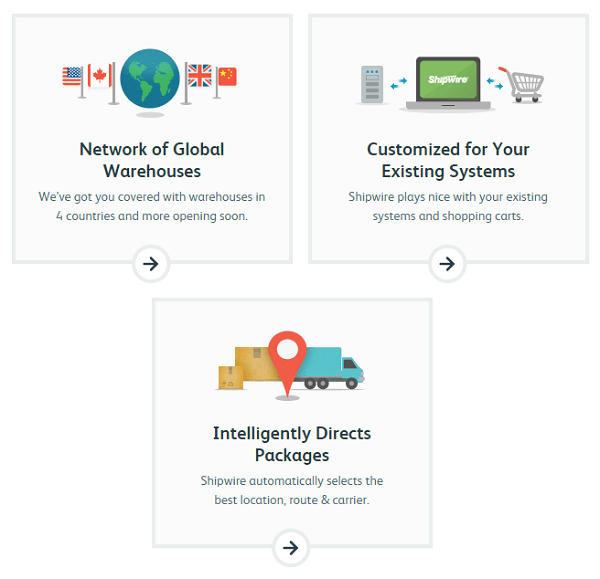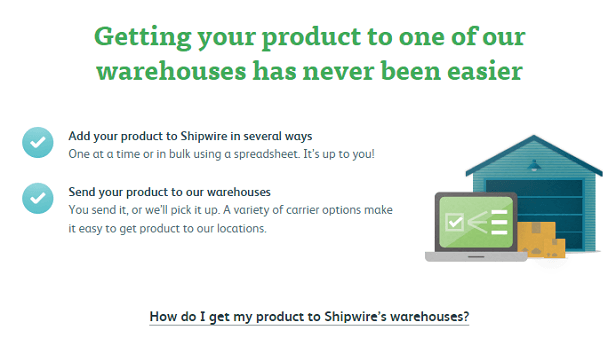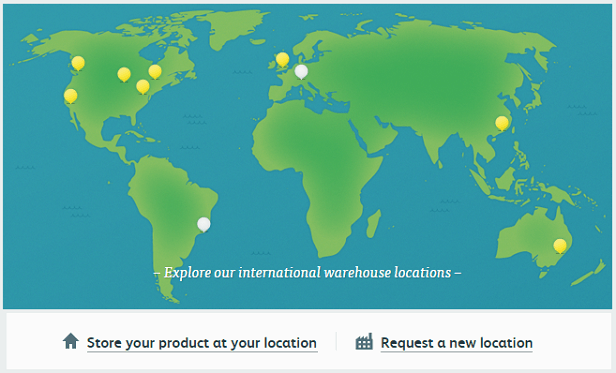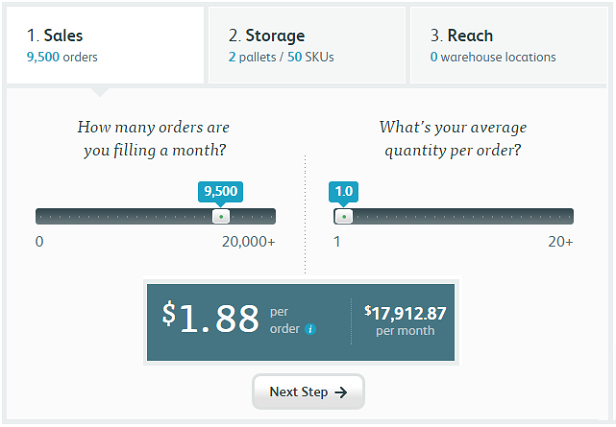While most of my experience with ecommerce has been on the digital side, I have many friends who have found various levels of success selling tangible products through their online stores. No matter what they’re selling, there’s one issue which, eventually, always comes up. And how it’s dealt with seems to be a big determinant in the overall success of the business.
The issue is that physical products are, well, physical products. They need to be stored somewhere. When the company is just a small start-up, the products can usually be stored in the garage or a spare room. Eventually, however, inventory will outgrow those spaces. Rare is the start-up which becomes so successful they can move directly from a garage right into their own warehouse. So what is a company supposed to do in the meantime? Shipwire.com has a very interesting solution.
About Shipwire.com
Shipwire.com is a warehousing and order management company for online retailers. Think of it like a “Rent-a-Warehouse” for your online store, although that’s a bit of an oversimplification. For a monthly fee, Shipwire will store your items, and then handle basically every aspect of their shipping.
Here’s how it works:
- You ship your items to Shipwire. They’re stored in one of five giant warehouses across the U.S. and Canada.
- You sell your items through your existing channels. Shipwire fits right into what you’re already doing. I’ve never heard of anyone having to significantly change their shopping cart system.
However, now, instead of orders going to you, they’re going to you and to Shipwire.com (or just Shipwire, if you prefer). - Shipwire packs and ships the items. They handle everything, even returns.
There are all sorts of bells and whistles, but that’s the business model in a nutshell. It’s straight-forward and, based on what I’ve seen, works extremely well.
Shipwire is backed by serious brainpower, too. Their founder and current CEO is Damon Schechter. He’s the former project manager for the Cobalt Networks. There, he developed the first successful ecommerce web servers. This eventually led to the company’s $2 billion acquisition by Sun Microsystems. That’s right, the founder of Shipwire didn’t just come up with the concept for the business, he invented the technology which powers it, too.
Top Features of Shipwire
Beyond the basics, there are all sorts of nice special touches you can find with Shipwire.
Shipwire supports your ecommerce platform. To put it bluntly, if Shipwire doesn’t support your ecommerce platform, your ecommerce platform has got to be pretty weird. I’ve never heard of a problem with Shipwire connecting to whatever system an online retailer is already using to take payments and orders.
Along those same lines, you can tailor the shipping to each order. Shipwire will look at a customer’s shopping cart to find a match between when they want the item to arrive and, shipping-wise, how to best make that happen.
Additionally, you can easily upgrade your packaging to include branded shipping and inserts. Your packages will be easily identifiable as belonging to your operation. Plus, promotional material for your store will be put into each box. It adds a touch of professionalism and, hopefully, drive customers back to your site for future purchases. The whole thing is only 20 cents a shipment, so it’s usually considered money well spent.
Shipwire fully automates many common issues. They handle address verification. They pick the best shipping options based on the customer’s needs and location. They manage back orders. They determine which one of their warehouses to draw product from, in order to make the shipping as smooth as possible. All orders received by 5:30 in the morning will ship that same day, which means you can effectively promise one-day turnaround time.
That’s another interesting thing about Shipwire. They have multiple warehouses across the country. Let’s break it down:
- 2006 – Private Shipwire beta begins
- 2007 – Shipwire officially launches with one warehouse in Chicago.
- 2008 – Shipwire opens three more warehouses, and expands its operations into Canada. The U.S. warehouse is in Los Angeles, while the Canadian ones are in Vancouver and Toronto.
- 2009 – Shipwire goes international as a warehouse is opened in the United Kingdom
- 2011 – Shipwire opens a warehouse in Philadelphia. They also get a huge infusion of cash, and a huge vote of confidence from the business world, as both eBay and Newell Rubbermaid invent in Shipwire.
- 2012 – Shipwire opens a warehouse in Hong Kong.
For those keeping score at home, that’s seven warehouses located in four countries. No matter where you ship, you can store your products somewhere close to home. If you mainly ship inside North America, you can store product across multiple warehouses, and Shipwire will determine which warehouse to draw from based on each customer’s geographic location.
As should be clear by now, these are modern warehouses which operate under carefully controlled conditions. Your product will be secure, safe and handled as little as possible.
Shipwire Prices
Shipwire provides a lot of services, and I’m not going to lie: It’s not cheap. If you’re just barely past the stage where your garage can’t handle your inventory, you’re going to have to crunch the numbers and see if Shipwire is for you.
The price of Shipwire is broken down into three parts:
- Sales – How many order do you fill each month?
- Storage – How many unique products do you sell, and how big are they?
- Reach – Where do you usually sell your products? Do you plan to expand into other areas?
Unfortunately, there is no one set price I can quote you. Fortunately, there is a very easy tool on the Shipwire website where you can calculate your costs. The sliding scales let you tinker with each factor, and see how it influences your costs.
This is a relatively new tool on Shipwire, so be wary of any other reviews out there which quote a flat rate, as they might be out of date.
Remember, still have to pay the shipping costs yourself. However, one big advantage of Shipwire is, if you sell enough items across the country or the world, you can take advantage of their multiple warehouses. When your items are closer to your customers, everyone says on shipping costs.
Additionally, Shipwire lowers handling costs in relation to volume. The more product you ship, the cheaper the handling.
Criticism of Shipwire.com
The main criticism comes mainly from other online tech reviewers, who don’t like that there is no one set price to quote. But this ability to only pay what you need seems like an advantage to me. Shipwire is scalable to your needs, whether you’re entering the world of warehousing for the first time or already have a large operation you need managed. (For instance, Shipwire handles the merchandise distribution for Angry Birds, so they know large operations.)
Customer Satisfaction
Customer service is just an email or a phone call away, and they’re staffed by a dedicated support team. Plus, the site itself has very clear FAQ’s and tutorials you can access 24/7.
In regards to your customers, and their customer service needs, there are again no issues. Shipwire handles returns, lost packages and any other shipping issues which show up from time to time, and there seem to be no issues with any of that. All in all, it’s considered a very professional company which is easy to work with.
Final Thoughts

You have to sit down and carefully look at the numbers. If you’re a small company, Shipwire might be something you build towards, rather than join today.
But once you do sign up, you’re in for a real treat. Your shipping operations will become automated and streamlined, and your storage worries will be a thing of the past.













